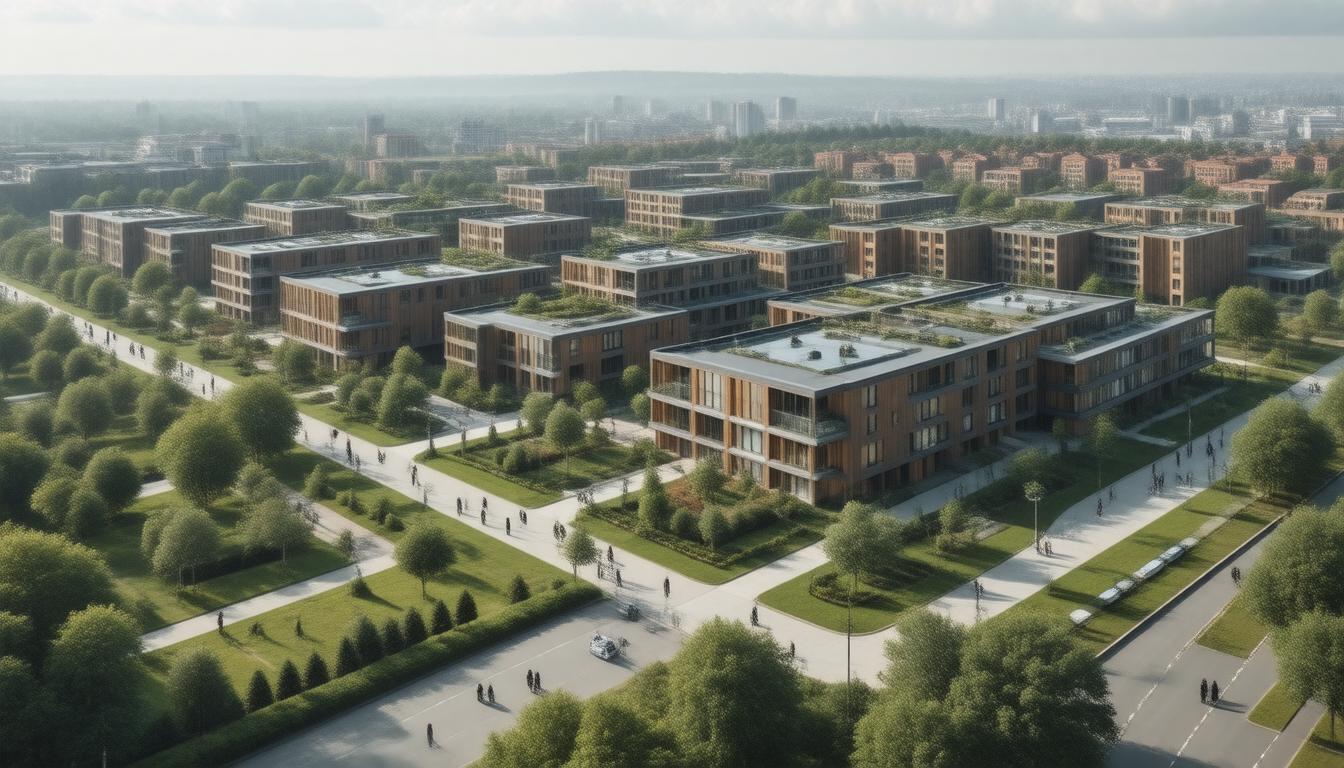The UK housing market has shown positive early signs in 2025, with a notable uptick in new listings and average property prices, signalling a potential recovery. Recent data released by Rightmove indicates an 11% increase in the number of homes available for sale compared to the previous year, complemented by a
1.7% rise in the average property price, which now stands at £366,189 — the largest price increase since
2020. These trends are further bolstered by a decrease in interest rates and a drop in inflation to
2.5%, encouraging more buyers to actively participate in the market (Rightmove, 2025). Despite this optimism, affordability remains a critical issue, as prices are still approximately £9,000 below the peak seen in May 2024, highlighting the ongoing challenges faced by prospective homeowners.
With a 9% rise in buyer inquiries and an 11% increase in agreed sales since Boxing Day, the market shows dynamic movement, and the level of available homes per estate agency has reached a decade-high for this time of year, creating a competitive landscape for sellers. Colleen Babcock from Rightmove commented on the strong start to the year but cautioned that heightened competition might temper future price growth (Rightmove, 2025).
Looking forward, Rightmove projects approximately
1.15 million property transactions in 2025, predicting an average asking price growth of around 4%. However, potential changes in interest rates and revisions to stamp duty regulations, which are scheduled to be implemented in April, may pose additional challenges, particularly for smaller homes in high-valued areas due to the impending reduction of the tax-free threshold to £300,000. These factors create an uncertain yet hopeful outlook for first-time buyers unless further support mechanisms are introduced.
Key Takeaways
- The UK housing market has seen an 11% increase in new property listings and a
1.7% rise in average property prices in early
2025. - Despite positive trends, average property values are still approximately £9,000 below the peak from May 2024, indicating ongoing affordability issues.
- Future uncertainties concerning interest rates and stamp duty revisions could affect market dynamics, particularly for smaller homes.
Current Trends in the UK Housing Market
The UK housing market is exhibiting strong trends at the commencement of 2025, as demonstrated by recent data from Rightmove. Notably, the marketplace has experienced an 11% increase in the number of homes listed compared to the previous year, alongside a
1.7% rise in the average property price, which now stands at £366,189. This is the most significant price jump recorded since 2020, driven by decreasing interest rates and a decline in inflation to
2.5%, prompting buyers to engage more actively in the market. The number of buyers contacting estate agents has risen by 9%, while the rate of agreed sales has surged by 11% since Boxing Day, marking a robust start to the year (Rightmove, 2025). Furthermore, the inventory of homes available per estate agency branch is the highest it has been in a decade, fostering a competitive atmosphere for sellers. Colleen Babcock from Rightmove cautions that while market activity has been vigorous, increasing competition may eventually temper price rises in the months ahead. In terms of projections, Rightmove anticipates approximately
1.15 million transactions throughout the year, with an expected average asking price increase of around 4%. However, the landscape does harbor uncertainties, particularly concerning potential interest rate cuts by the Bank of England and amendments to stamp duty regulations set to take effect in April. The anticipated reduction of the tax-free threshold for smaller homes to £300,000 may especially affect first-time buyers in higher-priced regions unless supportive measures are implemented (Rightmove, 2025).
Overall, these dynamics point towards a resilient yet cautious housing market, as stakeholders navigate fluctuating economic conditions and policy changes.
Future Outlook and Challenges Ahead
As the market evolves, several challenges are on the horizon that could impact the sustainability of this upward trend. For instance, potential interest rate cuts by the Bank of England, while designed to stimulate the economy, may inadvertently lead to market volatility as buyers react to shifting financial landscapes. Moreover, the impending changes to stamp duty regulations could disproportionately affect first-time buyers, particularly in high-demand areas where property prices are already inflated. This regulatory shift, reducing the tax-free threshold for smaller homes, might deter new entrants into the market, subsequently slowing transaction volumes (Towards a Sustainable Future, 2024). Additionally, a potential rise in inflation could also complicate the economic environment, warranting close monitoring from both buyers and industry professionals alike. Experts recommend maintaining a balance between fostering accessibility for first-time buyers and ensuring that property value growth remains controlled, to prevent the market from overheating (Smith, 2025). Thus, as 2025 progresses, stakeholders should remain vigilant to maintain market stability amidst these challenges.





